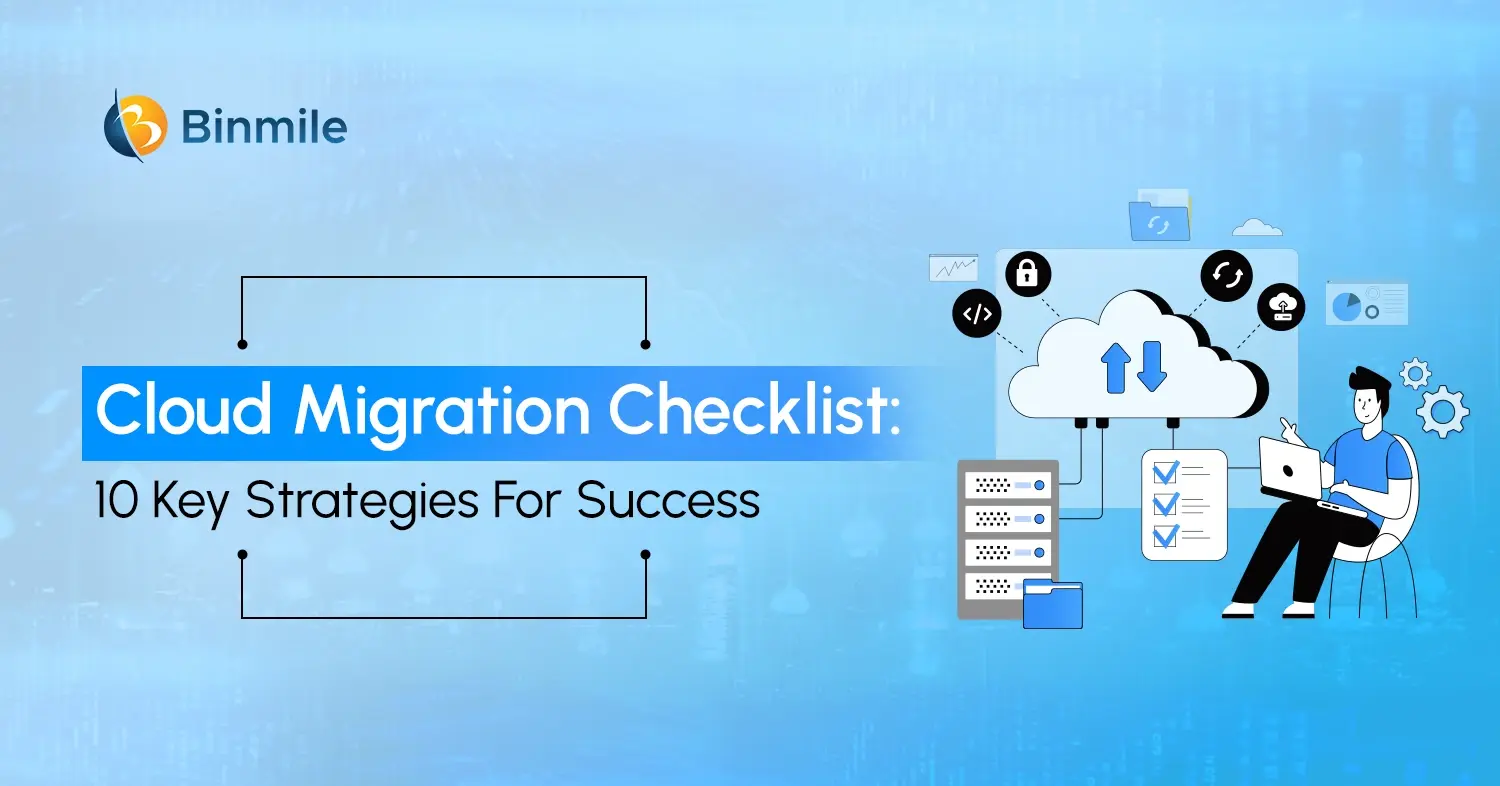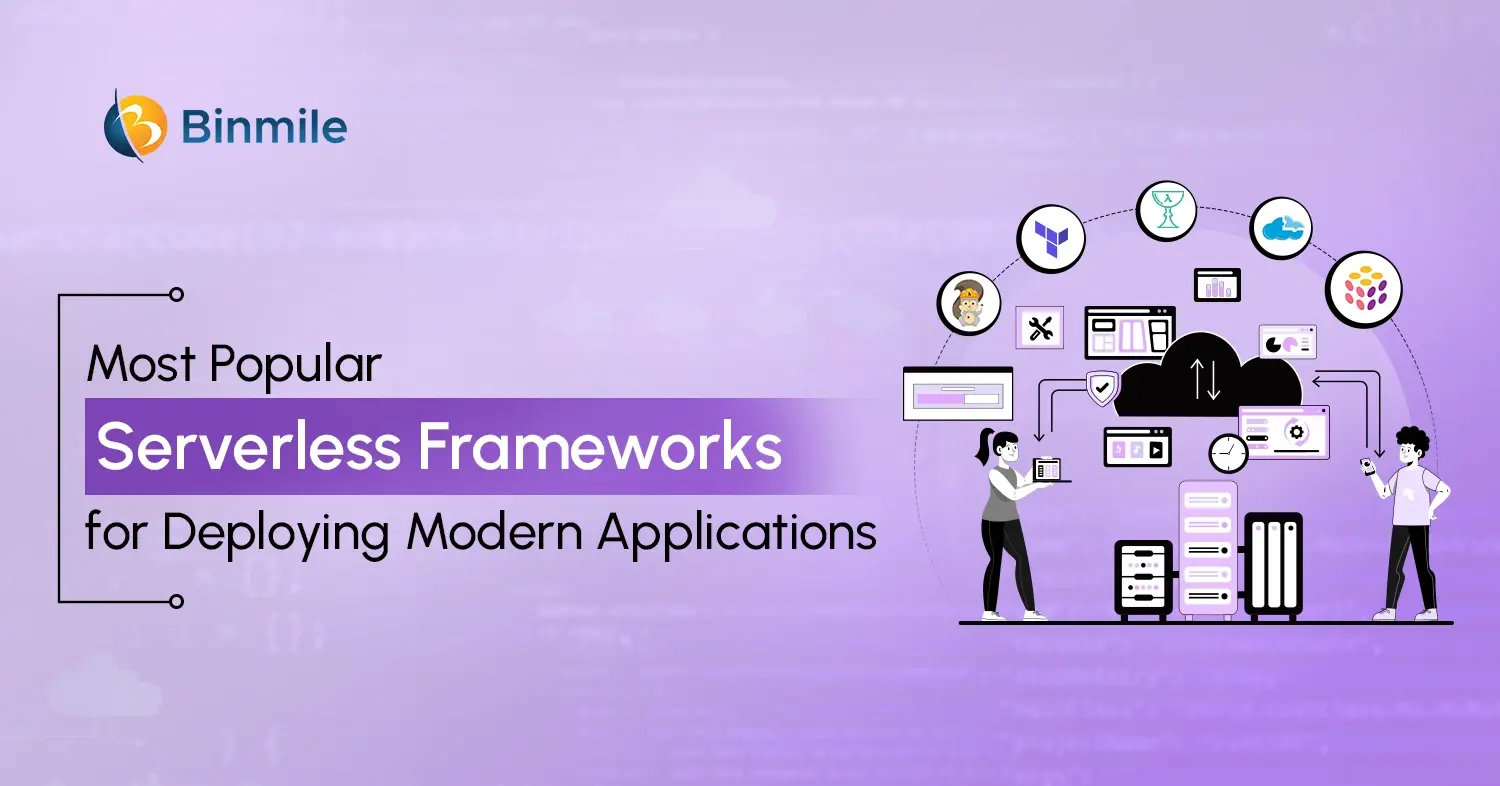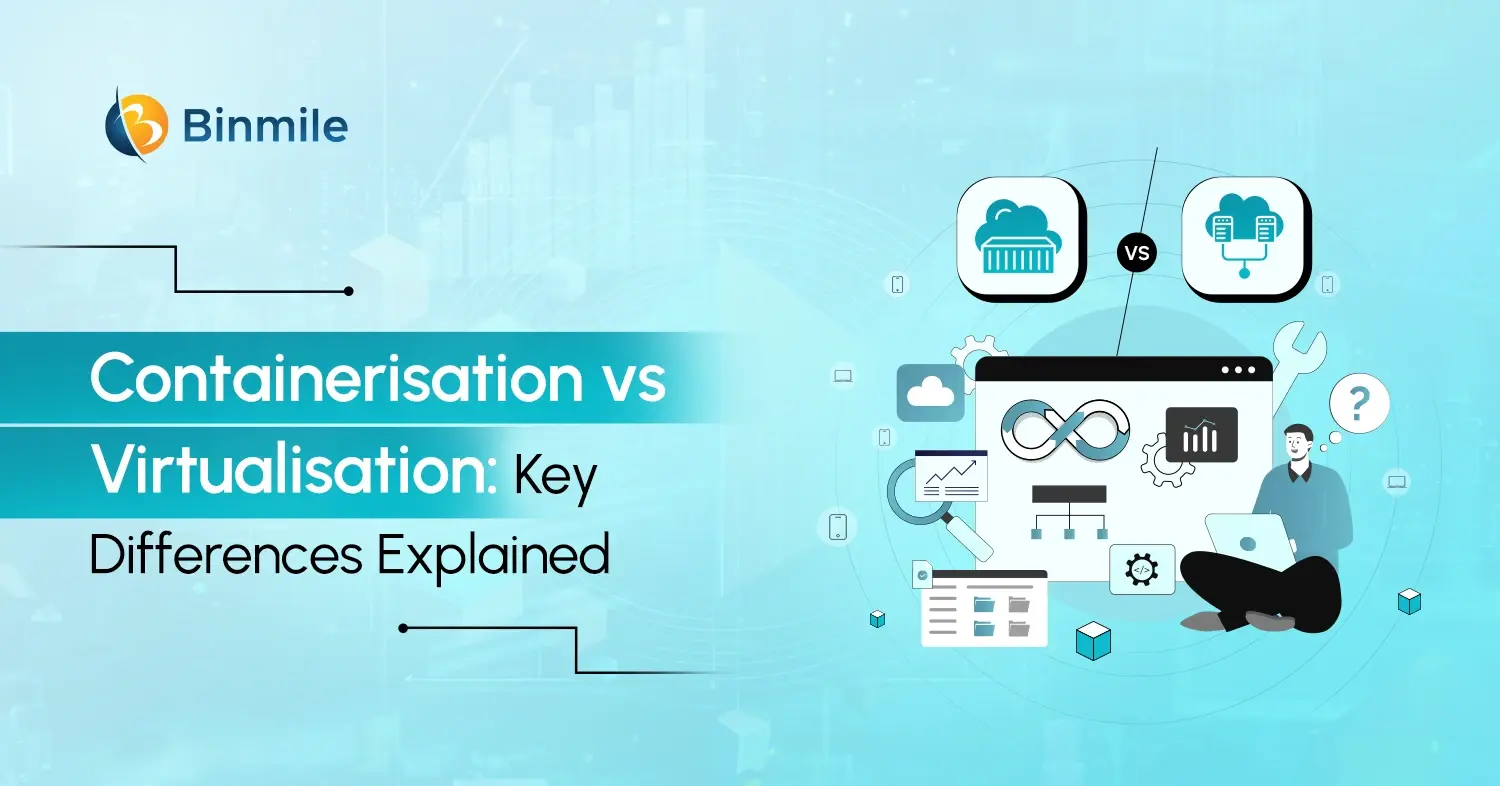- cloud automation software
- cloud automation tools
- Cloud Configuration Management Tools
- Cloud Cost Optimization Tools
- cloud infrastructure automation tools
- Cloud Monitoring & Performance Tools
- Cloud Security & Compliance Tools
- top cloud automation tools
- types of cloud automation tools
- use cases of cloud automation tools
As the complexity of operational workloads grows and manually managing cloud environments becomes an expensive and time-consuming task, businesses need a way to address these problems. This is where the concept of cloud automation becomes beneficial and helps in simplifying cloud operations by configuring, deploying, and managing cloud computing resources and services. To do so, cloud automation uses a plethora of cloud automation tools and provides automation capabilities irrespective of the size and type of the organization.
Leveraging cloud infrastructure automation tools, businesses can streamline and manage their various cloud environments, which leads to reduced manual errors and accelerated business processes. So, what are these tools? And how do they effectively manage numerous cloud environments? This blog will help you understand the concept of cloud automation, its types, top tools, and the key benefits of using it within your organization.
What is Cloud Automation Tools?
Cloud automation software or tools provide teams with the ability to streamline their cloud management workflows and make operations efficient, reducing manual effort. By automating the cloud environments or resources, these tools ensure that the operations are less prone to errors and also enhance their performance and capabilities.
5 Popular Types of Cloud Automation tools
1. Cloud Infrastructure Automation Tools
Infrastructure as Code tools, or IaC tools, use code to automate the provisioning and management services of cloud infrastructure. This is done by declaring all infrastructure pieces as code and then enforcing environment consistency, eliminating the manual efforts. With these IaC tools, handling of the large-scale infrastructure is easier, and automation helps identify and work around the tracked issues faster.
2. Cloud Configuration Management Tools
Cloud configuration management tools involve the automation process of setup and configuration management of various cloud systems and services. By maintaining the cloud servers, these tools are dynamic in nature and ensure consistency and system stability. DevOps teams can use these tools to eliminate inconsistencies across various systems by simplifying patching and maintaining some controlled policies.
3. Cloud Monitoring & Performance Tools
Cloud monitoring tools automate performance-related operational activities such as detecting potential issues, alerting actions, autoscaling resources, etc. For performing these activities, these tools provide teams with real-time insights and also collect and trace different cloud metrics. By leveraging these tools, teams can manage large datasets with effective and advanced techniques, leading to the detection of issues early.
4. Cloud Cost Optimization Tools
Cloud cost optimization tools are usually used within the Cloud FinOps framework and help FinOps teams to analyze their organization’s cloud usage patterns. By analyzing usage patterns, teams can detect cost anomalies early, if there are any. These tools help teams by rightsizing cloud instances, automating the process of cleaning idle resources, and providing budget alerts.
5. Cloud Security & Compliance Tools
Cloud security and compliance tools are used by teams to legally enforce some defined security measures or policies. These policies create clear security rules that teams need to completely comply with while working with critical customer personal or financial data. Not only do these tools help organizations legally comply with industry regulations, but they also provide a way to securely process all the cloud-related operations.
Top 11 Cloud Automation Tools: An In-Depth Analysis
Here is the list of top tools based on the types of automation tools discussed above:
1: AWS CloudFormation

The AWS CloudFormation tool is an IaC (Infrastructure-as-Code) tool, which uses JSON and YAML for defining the logic. It comes in handy for administrators and developers, allowing them to model and set up cloud resources, provision, and manage them in an orderly and predictable way. It does this by using templates and treating the cloud resources as infrastructure as code.
Utilizing this tool, teams don’t need to individually create and configure the AWS resources that are needed. Teams have to describe the AWS cloud resources, such as EC2 instances, RDS DB instances, etc., and CloudFormation will automatically configure them.
2: Terraform

Terraform is another IaC tool that teams can use to build, automate, and update infrastructure and resources on any cloud and on-premises effectively with the help of HCL (HashiCorp Configuration Language). It can handle both the low-level components like storage and compute instances and high-level components such as SaaS features and DNS entries.
To do so, this tool enables teams to write and define human-like configuration files (adopting the declarative style), and these files can be used to provision and update the infrastructure as necessary. The Terraform tool now creates an implementation plan, and on approval, it performs the defined operations with complete efficiency for updating and managing infrastructure or resources.
3: OpenTofu

The OpenTofu Infrastructure as Code tool is a community-driven and direct fork of Terraform, which uses HCL for defining logic and provisioning of infrastructure and resources. It has a similar working flow structure to Terraform, that is, Write, Plan, and then Perform defined actions in the correct order. This tool is designed to serve as a drop-in replacement for Terraform, as it is a completely open-source tool and comes with no vendor lock-in system.
By leveraging this automation tool, teams can have access to new capabilities that Terraform doesn’t have yet. Some of these new features include:
- Built-in state encryption- protect the cloud infrastructure and sensitive resources or data at rest or when stored in remote locations
- Early Variable or Local Evaluation- update all the modules whenever a single variable is changed, ensuring the infrastructure data remains consistent at all times
4: Pulimi

Pulumi is another key open-source IaC framework or tool that builds, provisions, and manages infrastructure on any cloud using programming languages. Languages such as Java, Python, Go, C#, YAML, and TypeScript are used to define the infrastructure’s logic. These languages enable teams to write modular and reusable code.
Unlike the traditional IaC that relies on domain specific languages (like HCL) for defining and operating the needed action, this tool directly integrates into the development environment. It then allows teams to write code for defining infrastructure and core applications’ functionalities using the same language.
5: Chef

Chef is an open-source cloud configuration and management tool. It ensures that the cloud infrastructure is managed as code and is automatically configured, which results in enhanced consistency of cloud management. It utilizes Ruby, which is a domain specific language (DSL) for defining and writing system configuration.
It works on both the agent-based and agentless approaches. Teams have to choose the best fit according to the operational needs. If there are requirements of high security and continuous policy enforcement, then the agent-based deployment is the correct solution. Whereas, agentless deployment is ideal when the business wants to offer high-level visibility across various networks.
6: Ansible

Ansible is another open-source management engine or tool that automates, manages, and deploys multiple cloud infrastructures or environments with the help of middleware collections. For automating these infrastructures, it uses simple and human-like YAML syntax without any agents on the target cloud environment. This means that it operates APIs without requiring the installation of any additional software across IT infrastructures.
With its agentless architecture, teams can connect to thousands of nodes and manage them without worrying about maintenance overhead and complexity. Additionally, its declarative approach enables simplifying the process of scaling the multi-cloud platforms.
7: SaltStack

SaltStack, commonly known as Salt, is a very powerful automation configuration management tool that is used to manage and configure scalable cloud infrastructure or resources. Salt’s working architecture is based on the remote execution of all the commands, and commands are centrally managed using a master-minion model.
With this master-minion model, multiple small or minion nodes are controlled using a master server, and communication between nodes is done using the server. This ensures teams have a more efficient way of managing their complex cloud environments, as it has a single master that controls and manages thousands of nodes.
8: Rudder

Rudder is another key configuration management tool that focuses on automating infrastructure with continuous audits and compliance management. It approaches an infrastructure with a declarative configuration, along with real-time auditing and compliance reporting, enabling operational teams to define states of desired cloud environments. This means that teams can manage the workflow of how their cloud environments should look after updating them.
Additionally, it has an agent-based architecture with an inventory tracking system that supports multiple operating systems like AIX, Windows, Linux, and more relevant systems. By leveraging this tool, teams can define configuration policies and ensure that their cloud infrastructure or resources remain efficient and secure.
9: Datadog

Datadog is a modern cloud-based monitoring and analytics tool. It provides organizations with the ability of real-time access and 24/7 monitoring of cloud servers, databases, and other cloud environments. It triggers automated alerts or notifications whenever any anomalies or issues are detected by the system itself. It also supports teams to control the overall cloud spending with its cloud cost optimization capabilities.
With the support of various powerful data analytics and visualization tools, this tool helps teams to optimize their cloud environment, be it on-prem or hybrid environments. In addition to this, it can be integrated with 600+ technologies such as AWS, GCP, Azure, Kubernetes, etc., for faster troubleshooting and enhanced visibility of the cloud resources.
10: Amazon CloudWatch

Amazon CloudWatch is another monitoring tool that enables teams to monitor, analyze, and optimize their cloud infrastructure or resources in real time. By gaining analytic insights through logs and performance data, teams can reduce costs and make their systems more cost-effective. This is done with the help of Amazon CloudWatch features. Some of these are:
- CloudWatch Events: Used for supporting event-driven automation and directly helps respond to system changes with automated workflows
- Custom Dashboards: Helps in visualizing the performance of cloud infrastructures and resources
- CloudWatch Logs and Insights: Used to store and analyze log data in real time
- Triggering Alarms: Set threshold values and trigger whenever there is unusual activity
11: Prisma Cloud

Prisma Cloud is a cloud-native application protection platform or tool (CNAPP). It enables teams to have a unified security platform and protect applications, data, and infrastructures across all cloud environments. By providing comprehensive security and compliance, it helps to secure the multi-cloud and hybrid environments throughout the cloud operations cycle.
For protecting cloud applications and infrastructure, it provides main features such as CI/CD pipeline integration, container & serverless security, vulnerability management, compliance assurance, etc. Moreover, to provide predictive production against any potential threats, it has a runtime defense environment to identify and respond to the threat in real time.
Top 5 Benefits of Cloud Automation Tools
A shift to the cloud is a viable strategy to make the business up-to-date and competitive. About 98% of enterprises have reportedly adopted cloud-based solutions in some form, completely eliminating the need for legacy computing and data storage methods. In this transforming shift, cloud automation has played a significant role, as it enables teams to gain better insights, reduce cloud costs, and automate business processes. Here is a rundown on some top benefits of cloud automation.
1. Reduced Operational Costs
Cloud automation drives lower operational costs by automating manual tasks, which results in reduced errors and increased productivity. Some of the core business tasks that need to be automated are installation, monitoring, troubleshooting, and deployment of hardware and software applications. Also, while leveraging cloud automation software or tools, teams can only pay for the services or servers they have availed for.
2. Enhanced Security
Automation of cloud environments or resources results in enhanced security as teams can manage the mission-critical systems with smart and secure automated workflows. Cloud automation ensures the provision of a secure setup with little or no manual intervention. Utilizing these cloud infrastructure automation tools, teams can speed up the incident response, as cloud automation has self-detecting, self-healing, and auto-correcting capabilities. This helps teams react faster to the vulnerabilities, which results in reduced damage.
3. Centralized Governance
One of the major upsides of these tools is its flexibility, allowing authorized users with network and device access to work from anywhere at any time. It helps organizations to consistently manage and control their IT infrastructure with a centralized management approach. Automation tools enforce security policies such as role-based access control (RBAC), so that only authorized users can gain access to confidential data and processes.
4. Scalable Cloud Migration
Cloud automation is a perfect solution for enterprises that have or may have complex business functions in the future. Automation tools provide teams with flexibility and scalability, as they can scale up or down in accordance with the specific business needs. It also allows organizations to change and adapt cloud resources based on the current market needs. This level of flexibility and scalability results in a smoother and faster cloud migration without any risks.
5. Improved System Resiliency
Cloud automation tools provide regular monitoring and management, which helps in spotting potential problems automatically before they impact the cloud services. To ensure the system is more resilient, it can transfer resource workloads to temporary standby server locations during failures to protect the system against any threats. Also, these tools secure business operations by providing backup orchestration or automated failure mechanisms to enable rapid recovery whenever a failure in any process occurs.
Real-World Use Cases of Cloud Automation Tools

1: Testing and Application Deployment
One of the crucial use cases of cloud automation is in the testing phase. Automation tools and techniques allow teams to automate their CI/CD testing pipelines and deploy the application in the production environment. The tools also manage automatic upgrades to ensure continuous app deployment. By leveraging these tools, teams can deliver a high-quality product with fewer errors and reduced time-to-market.
2: Infrastructure Provisioning
Another use case of cloud automation is that automation tools help eliminate the manual work of setting up each virtual server. Instead of a time-consuming manual configuration process, automation tools provide predefined templates that help teams to automatically configure each virtual server with much more ease. In addition to this, it also ensures all cloud-related processes, such as storage setup, networking, etc., are being effectively automated.
3: Database Backups
Automation ensures that the data is always safe and recoverable by allowing routine execution of database backups in the Cloud. This is one of the key use cases, as these tools implement disaster strategies to ensure that the data is being backed up at regular intervals. This results in enhanced data consistency by automating the process and reduced risk caused by human errors.
4: Hybrid and Multi-Cloud Management
Businesses using both private and public cloud consulting services can get benefits from automation tools, as they allow them to manage their cloud environments using a single dedicated control panel. Managing complex hybrid and multiple cloud environments is one of the best-known use cases of cloud automation. It enables businesses and their development teams to improve efficiency using a single cloud platform, which comes with automatic provisioning and resource optimization techniques.
5: Automatic Monitoring
Automated monitoring tools in cloud computing help monitor and spot any problems or issues. These can include the following:
- Cost anomalies
- Unresponsive databases
- A server running low on memory.
Analysis of the health of cloud resources and their environments is done by tracking performance, usage patterns, and any other data analytics reports. This is one of the most important use cases, as by utilizing cloud automation, businesses can efficiently manage issues and solve them in real time.
Closing Statement on Cloud Automation Tools
Cloud automation tools provide automating capabilities to businesses looking for simplified solutions to reduce manual efforts & costs, streamline cloud operations, and optimize complex workloads. However, for choosing one of these tools, businesses need to properly understand their specific requirements. Knowing the unique goals and requirements, businesses can efficiently leverage these cloud automation platforms or solutions and successfully grow their business in the targeted market.
In this blog, we have jotted down cloud automation, its types, a detailed analysis of top tools, benefits, and real-world use cases. However, collaborating with a software development company can provide you with cloud-related and AWS-managed services that can result in profitable business growth.









